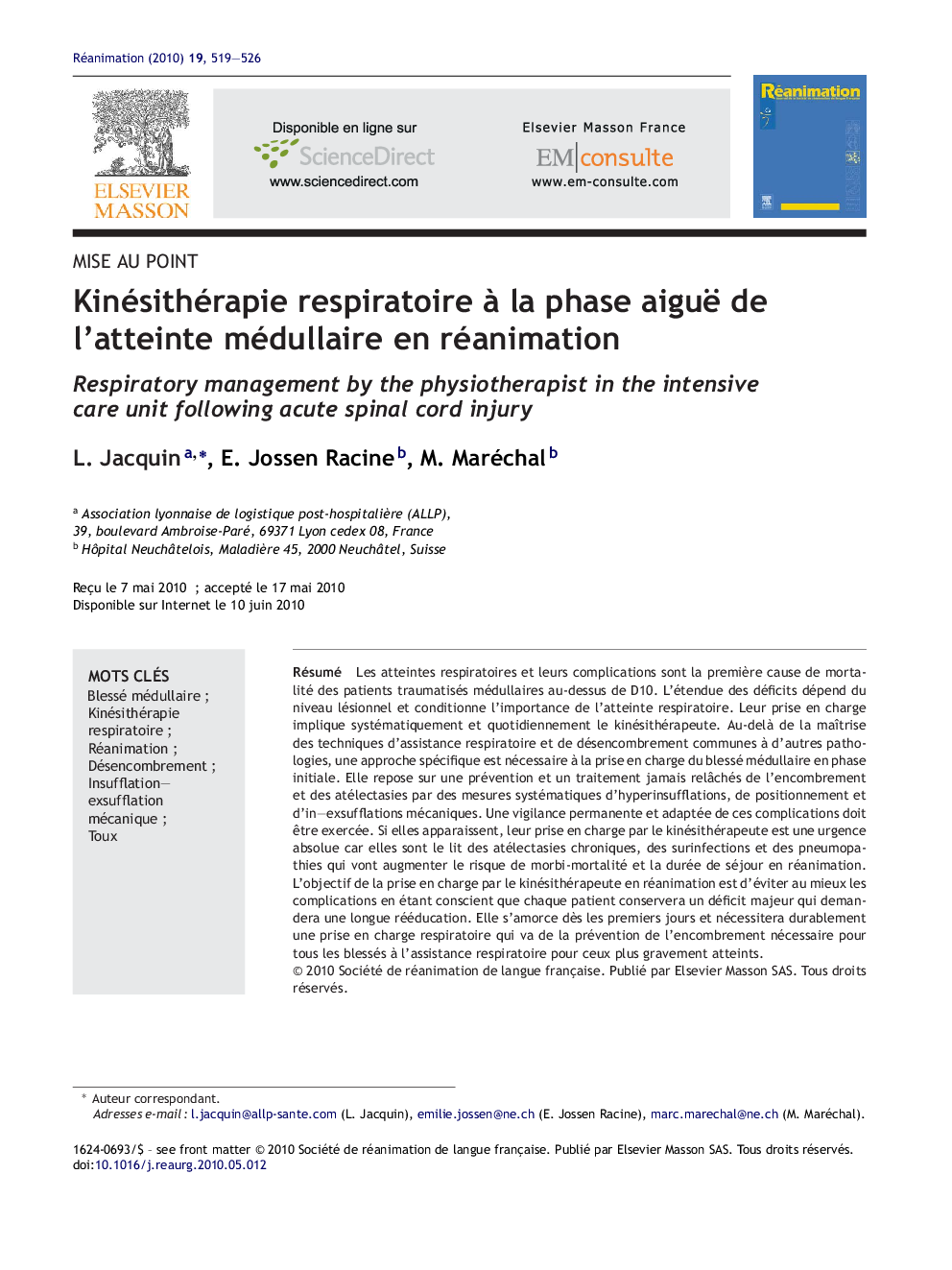| Article ID | Journal | Published Year | Pages | File Type |
|---|---|---|---|---|
| 2613158 | Réanimation | 2010 | 8 Pages |
Abstract
Respiratory complications following acute spinal cord injury are highly prevalent above the T10 level and represent the main cause of death. The number of respiratory muscles involved depends on the level of the injury and determines the severity of the respiratory impairment. The respiratory therapist is systematically involved in their daily care. In addition to the different routine techniques of respiratory assistance, a specific approach dedicated to these spinal cord-injured patients is mandatory. The cornerstone actions are the continuous prevention of mucus plugging and atelectasis using regular hyperinflation, bed positioning, and in-exsuflator cough assist devices. Mucus plugging and/or atelectasis should be promptly detected. Treatment should be aggressive and performed as quickly as possible to avoid chronic atelectasis, superinfection, and pneumonia. All these complications worsen the prognosis and prolong the length of stay in the intensive care unit. The respiratory therapist aims to avoid such respiratory complications although he should remain aware that severe neurologic sequelae may require a prolonged process of rehabilitation. This process should start rapidly after the first days in the intensive care unit and may require long-term respiratory cares including prevention of the risk of mucus plugging in all cases as well as total or partial ventilation support in patients with high cervical injury.
Keywords
Related Topics
Health Sciences
Medicine and Dentistry
Emergency Medicine
Authors
L. Jacquin, E. Jossen Racine, M. Maréchal,
